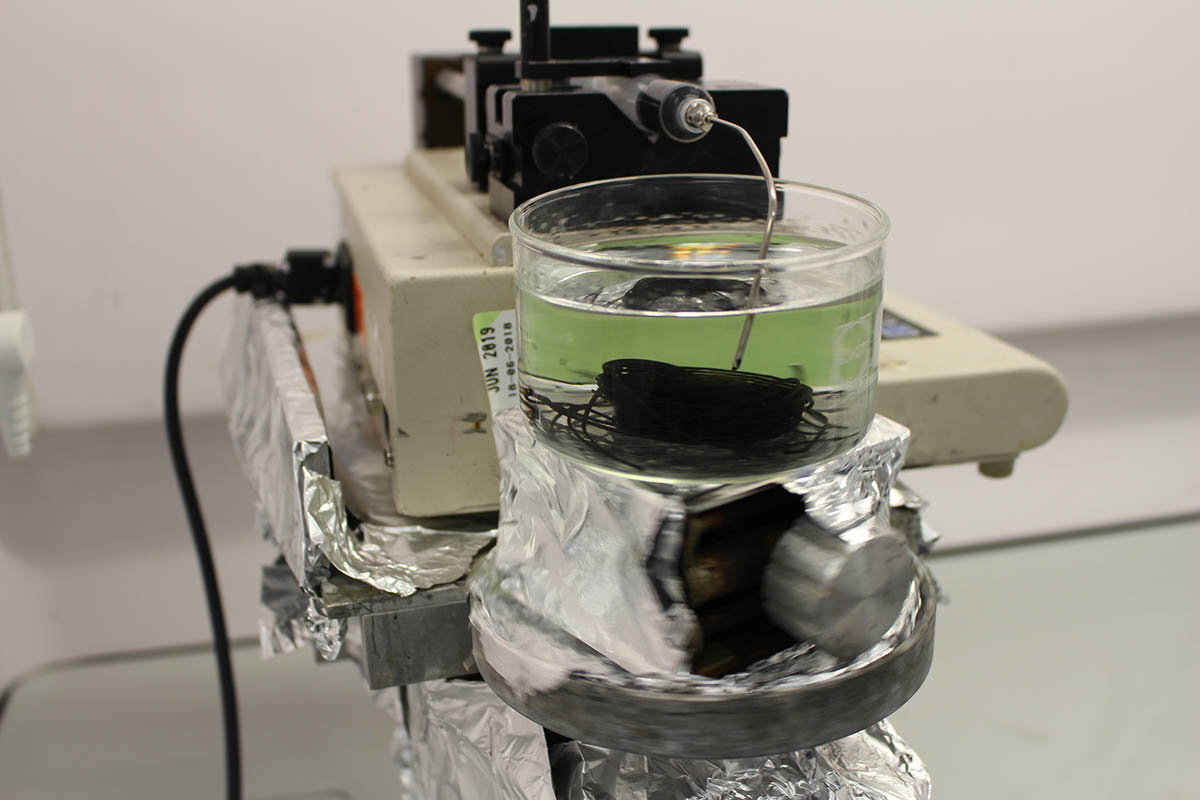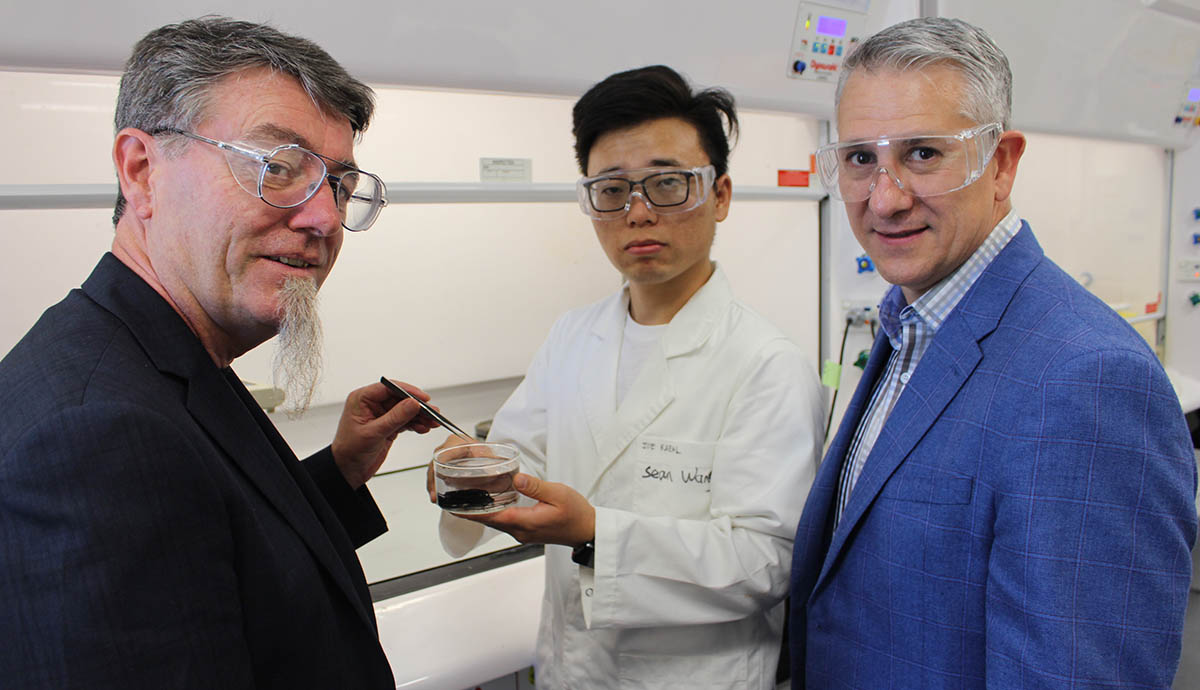February 8, 2019
ACES researchers combine old and new to revolutionise implantable devices
Ground-breaking device could be an alternative to pharmaceuticals for a range of conditions
Researchers from the ARC Centre of Excellence for Electromaterials Science (ACES) are pioneering a new electrical stimulation device that could replace the use of pharmaceuticals to treat a range of medical conditions.
In collaboration with researchers from the University of Texas at Dallas, the team has developed novel graphene fibres that have the ability to both record electrical impulses and electrically stimulate nerves with unprecedented levels of control. This work outlined in a paper titled “High performance graphene fiber based neural recording microelectrodes” was recently accepted by the Journal of Advanced Materials.
While the development of pharmaceutical drugs has revolutionised the treatment of a multitude of conditions, there are a number of limitations in terms of side effects and focused delivery. The emerging field of electroceuticals allows for the localised targeting of electrical stimulation to the neural circuits of specific tissues and organs to develop, improve and regenerate performance.
Currently, the field of electroceuticals uses existing materials to create the implantable electrodes, which have demonstrated compatibility issues with soft tissue, limiting the effectiveness of the electrical communication with the nerve.
To combat this challenge, the ACES team has used the traditional wet spinning fabrication method to manufacture a new style of fibre based on graphene to develop the ‘sutrode’, which combines the electrical properties of an electrode with the mechanical properties of a suture.
These sutrodes have demonstrated significantly improved electrochemical activity within nerves, and are stiff enough to penetrate soft nerve tissue, yet flexible to accommodate for micro-movements once implanted.
ACES Director Professor Gordon Wallace said the ACES team has long held a vision that the extraordinary properties of graphene could be used to enable better communication within nerves, and the sutrode has shown that this is possible.
“The sutrode is truly ground-breaking for the field of electroceuticals, and offers opportunities and results that may not be possible with pharmaceutical treatments,” Professor Wallace said.
“Greater spatial control is the key in successful electroceuticals to effectively stimulate specific nerves to treat specific medical conditions, and the sutrode has demonstrated unprecedented sensitivity in recording signals from nerves and unprecedented spatial resolution over the electrical stimulation of nerves.”
Prof Mario Romero-Ortega from the University of Texas at Dallas, said the collaboration with ACES had brought about state of the art advances in implantable electromaterials for medical bionics and electroceuticals.
“Our sutrodes could be an ideal material for developing the next generation of neural stimulation and recording electrodes that provide the opportunity to treat a range of diseases without drugs, such as diabetes,” Professor Romero-Ortega said.
“The strength and flexibility of the sutrode allow us to tie the device around incredibly small nerve bundles that then record and detect neuronal activity, giving us more effective communication from these individual nerve areas that any current electroceutical methods to then determine specific treatments for specific conditions.”
The sutrodes will be produced at TRICEP, Australia’s newest 3D bioprinting facility, located in North Wollongong. TRICEP is a 100 per cent owned initiative of the University of Wollongong, and works with research institutions to develop innovative technologies using 3D bioprinting and biomaterials.

3D Bioprinting: The Next Generation
Professor Wallace highlighted that breakthroughs like this are directly linked to the emergence of the multidisciplinary area of 3D bioprinting.
“We are in the midst of a revolution in science and technology, where the idea of a 3D printed body part is now becoming a very real possibility,” Professor Wallace said.
“We are potentially only a few years away from major hospitals being fitted out with 3D printing capabilities that can transform medical procedures, and we need to train the next generation of researchers and engineers to support this burgeoning industry.”
3D bioprinting is a rapidly growing area that draws on the skills from a range of fields including science, health, engineering and technology.
ACES and UOW are making it possible for anyone to learn about 3D bioprinting through a Massive Open Online Course (MOOC) Bioprinting: 3D Printing Body Parts. The 10th run of the 3D bioprinting MOOC is currently underway, with more than 27,000 learners from 145 countries enrolling in the course since it was launched in 2015.
UOW also offers a Graduate Certificate in Biofabrication, a practical online course designed for professionals currently working in the fields of science, health, engineering and technology, as well as those who want to pursue a career in biofabrication.
The ARC Centre of Excellence for Electromaterials Science (ACES)
ACES continues to advance cutting edge electromaterials science through the discovery of new materials, technology breakthroughs and 3D fabrication machinery to enhance the performance of electrochemical devices for our applications in energy, robotics, medical bionics and diagnostics.
